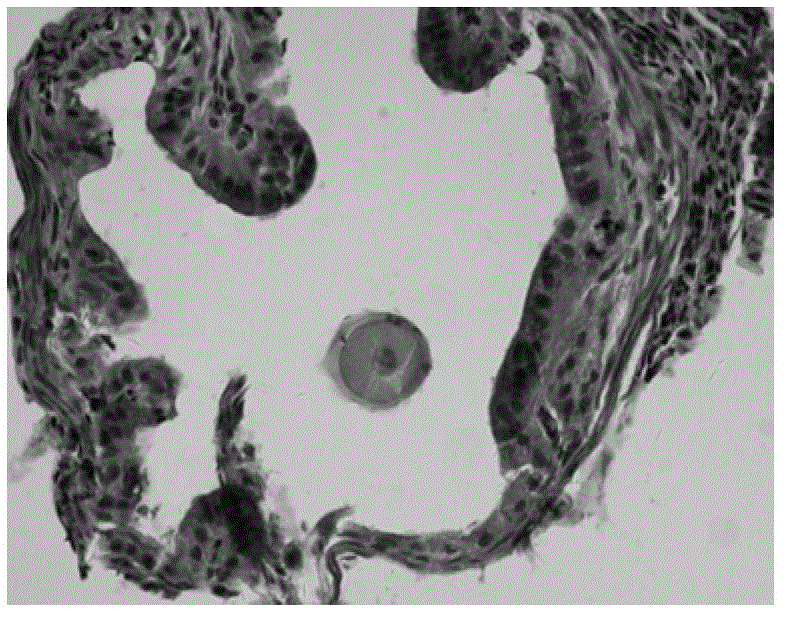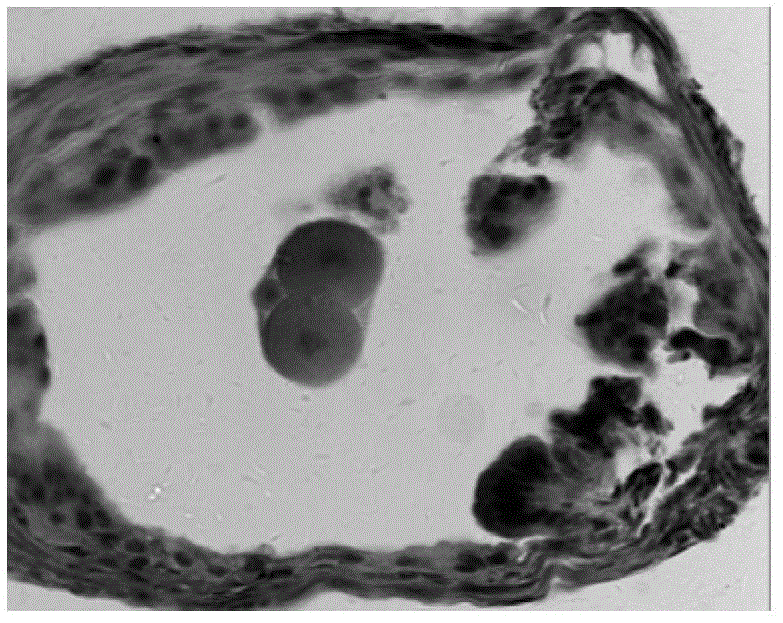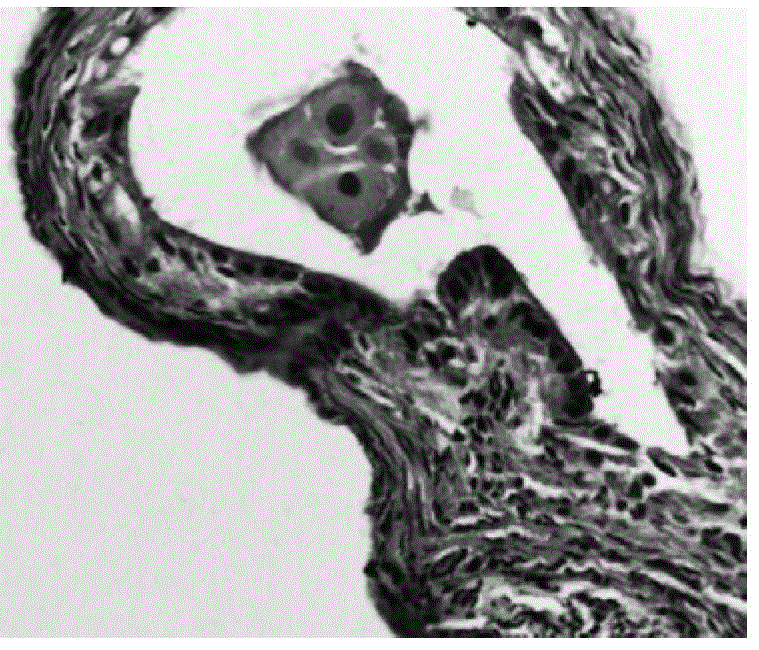Preparation method and application of tissue slice for observing temporal-spatial distribution of early embryo development in vivo
A time-space distribution and tissue slicing technology, applied in the biological field, can solve the problems of inconvenient operation and observation, inability to reflect the positional relationship of embryos well, difficulty in popularization, etc., and achieve the effect of continuity
- Summary
- Abstract
- Description
- Claims
- Application Information
AI Technical Summary
Problems solved by technology
Method used
Image
Examples
preparation example Construction
[0051] A method for preparing tissue slices for observing the temporal and spatial distribution of early mouse embryo development, comprising the following steps:
[0052] (1), mouse embryo model establishment and specimen collection
[0053] Select healthy Kunbai mice (200 female mice, weighing 25-30 g; 200 male mice, weighing 30-35 g). The room temperature was kept at 22°C, and the male mice were reared in a single cage under light-controlled conditions. Mice were used for experiments at least one week after they were purchased and acclimatized to the environment. Female mice were intraperitoneally injected with PMSG (10IU / mouse, Ningbo No. 2 Hormone Factory) at 5:00 p.m. 48 hours later, intraperitoneally injected with hCG (10IU / mouse, Ningbo No. 2 Hormone Factory), and mated with male rats (1:1) in the same night , Check the vaginal suppository the next morning. See Shuan as 0d, and the fallopian tubes covering fertilized eggs, 2-cell embryos, 4-cell embryos, and 8-cell ...
Embodiment 1
[0061] In vivo developmental time course and spatial position observation of early embryos of superovulated mice:
[0062] (1) Experimental animals and superovulation treatment: female Kunbai mice (6-8 weeks old, body weight 25-28 g) and male mice (8-12 weeks old, body weight 35-40 g) were selected. Under strict light control conditions (12h circadian rhythm), the male mice were reared in single cages. The female mice were intraperitoneally injected with 10IU PMSG at 15:00, and 10IU hCG was injected intraperitoneally at intervals of 48h for super-ovulation treatment. Immediately after the hCG injection, the female mice were placed in the same cage as the male mice overnight. In the morning of the next day, check whether the female rats have vulva plug formation, and those who are positive for the vulva plug inspection are presumed mated females, and they are picked out for use;
[0063] (2) Determination of the developmental time course of mouse embryos in vivo: based on the...
Embodiment 2
[0074] Crb3 expression in mouse embryos at various stages of development:
PUM
| Property | Measurement | Unit |
|---|---|---|
| melting point | aaaaa | aaaaa |
Abstract
Description
Claims
Application Information
 Login to View More
Login to View More - R&D
- Intellectual Property
- Life Sciences
- Materials
- Tech Scout
- Unparalleled Data Quality
- Higher Quality Content
- 60% Fewer Hallucinations
Browse by: Latest US Patents, China's latest patents, Technical Efficacy Thesaurus, Application Domain, Technology Topic, Popular Technical Reports.
© 2025 PatSnap. All rights reserved.Legal|Privacy policy|Modern Slavery Act Transparency Statement|Sitemap|About US| Contact US: help@patsnap.com



